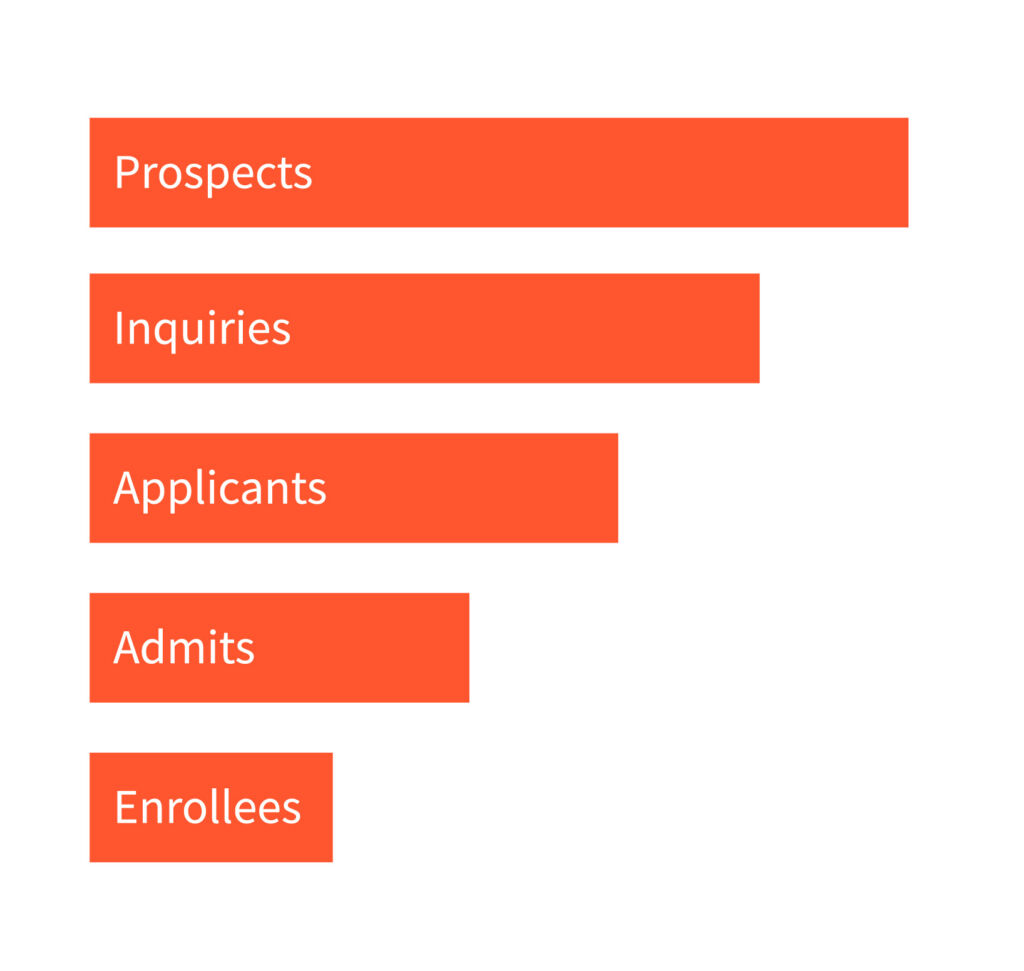“If you aim at nothing, you will hit it every time.” –Zig Ziglar
Top-Level Goals & the Enrollment Funnel
Top-level enrollment goals, defined prior to each admissions cycle, align with the various stages of the enrollment funnel seen below. Ongoing coordination between each academic unit, Enrollment Management, and campus leadership enables real-time assessment of these goals and dictates their fluidity.
Enrollment Funnel Stages (from the largest student volume down to the smallest)

Secondary-Level Goals
There are many goals within the realm of enrollment management. Hard goals, soft goals, short-term goals, long-term goals, enrollment goals, recruitment goals—the list goes on.
A secondary-level goal, such as increasing the number of attendees for recruitment events, should always align with one or more of the top-level enrollment goals. In this example, we could say that increasing the number of attendees for recruitment events supports strengthening our inquiry pool, which is a top-level goal.
Another example would be to increase engagement with students admitted to Biology. This secondary-level goal aims to strengthen the relationship between the Biology department and its admitted students, thus improving yield by encouraging more Biology students to accept their offers.
Goal Management
Top-level and secondary-level goals are clearly defined by Enrollment Management and each academic unit, and collaborative partnerships always strive for the achievement of these goals.
Strategic planning, coordinated execution, and intelligent analysis guide the process by which enrollment goals are managed.